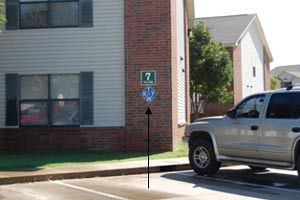Coming of age in the fire service in the 1970s as I did, little was known about “lightweight” construction or why firefighters died in the line of duty. The primary prerequisite for being a “good” firefighter then was to be aggressive.
Since the 2004 introduction of the 16 Firefighter Life Safety Initiatives by the Everyone Goes Home program, much has been learned about the causes of firefighter LODDs. But, not all firefighters are getting the message. We now know the top three killers of firefighters are:
- Cardiac related: Approximately 48 percent
- Motor vehicle accidents: Approximately 31 percent
- Lack of situational awareness: Approximately 21 percent (failure to know or react to situations that kill firefighters)
This series — check out part one and part two — has focused on lightweight wood frame construction dangers, which falls under the lack of situational awareness category.
Hostile fire events such as flashover, backdraft and wind-driven fire conditions are also included. Today’s firefighter must be thoroughly aware with these situations, and be able to quickly identify — and react properly — to changing and dangerous conditions. Firefighters must be intelligent first and aggressive second.
Here are some methods that can be used in managing the risk:
1. Stay knowledgeable
2. Know and practice the rules of engagement
3. Select the appropriate operational mode
4. Continually evaluate risk vs. benefit
5. Assign an Incident Scene Safety Officer
6. Develop, follow, and maintain current SOPs/SOGs for disposable structure fires
7. Use the latest technology i.e., thermal imaging cameras, CAF Systems, etc.
8. Stay heart healthy and physically fit for this job
9. Pre-plan and know where disposable structures are located
10. Be an advocate for residential sprinklers
11. Support fire inspection and code enforcement programs
12. Utilize a hazard identification system for disposable structures in your community
The only proven method for stopping a fire in the pre-flashover phase is by the installation of a residential sprinkler system.
Firefighters must know the facts regarding the cost and effectiveness of residential sprinklers and continue to advocate for their installation, despite the efforts by the home building industry across the nation to the contrary.
They have a very well funded lobby in many states, and are working overtime to spread disinformation and prohibit local jurisdictions from adopting residential sprinkler legislation. This has happened in Kansas in the past few months.
I am aware of at least one Kansas department that has proactively adopted a “No Enter” policy regarding lightweight wood frame structures to protect its firefighters. If no life hazard exists, and the fire has extended into the void space of the attic or basement, a defensive approach is taken to control the fire.
The Blue Diamond Hazard ID System
 Photo Gary Bowker Blue Diamond located on the front corner of a lightweight wood frame apartment building to alert firefighters. |
The purpose of the Blue Diamond Program is to alert responding firefighters arriving at the scene of a commercial or industrial structure fire where lightweight construction is used by the placement of a blue diamond placard on the exterior of the building.
One or more Blue Diamond placards are placed in conspicuous locations on the exterior of the building, thereby alerting responding firefighters immediately upon their arrival.
The Blue Diamond is designed with four quadrants, similar to the NFPA 704 Diamond. The all-weather reflective diamond is Safety Blue in color and measures 14 x 14 inches square. The top quadrant contains the letter T, which denotes the presence of truss construction.
The left quadrant contains the letter R if truss construction is used in the roof system. The quadrant to the right contains the letter F if the structure has floor trusses present.
If floor trusses are not present, the quadrant is left blank. The bottom quadrant contains the letter M or W, denoting either metal or wood construction components.
This information is also contained in the department’s quick access pre-fire incident plan. The advantage of the Blue Diamond program is two-fold. First, it provides four key pieces of critical information about the building’s construction immediately upon the arrival of firefighters prior to their entry.
Secondly, the diamond serves as a constant reminder to firefighters while doing preplanning and familiarization training in the community. This program was presented to the Winfield City Commission by the fire department and was unanimously recommended for adoption into the 2008 Winfield City Municipal Code for community-wide use.
This is a good example of the fire department being proactively involved in the community and receiving support from local government leaders to promote firefighter life safety initiatives. But we must first take the time to educate them to promote that cultural change.
If we fail to stay current and well informed in today’s disposable firefighting environment and continue to aggressively attack fires relying on yesterday’s tactics or luck for a positive outcome, we will continue to experience preventable LODDs and injuries in The United States. And that’s just not acceptable.
As firefighters and fire officers, we are responsible for many important things on the fireground. But I cannot think of anything more important than the life of a firefighter … especially if you’re the dad of three firefighters.












